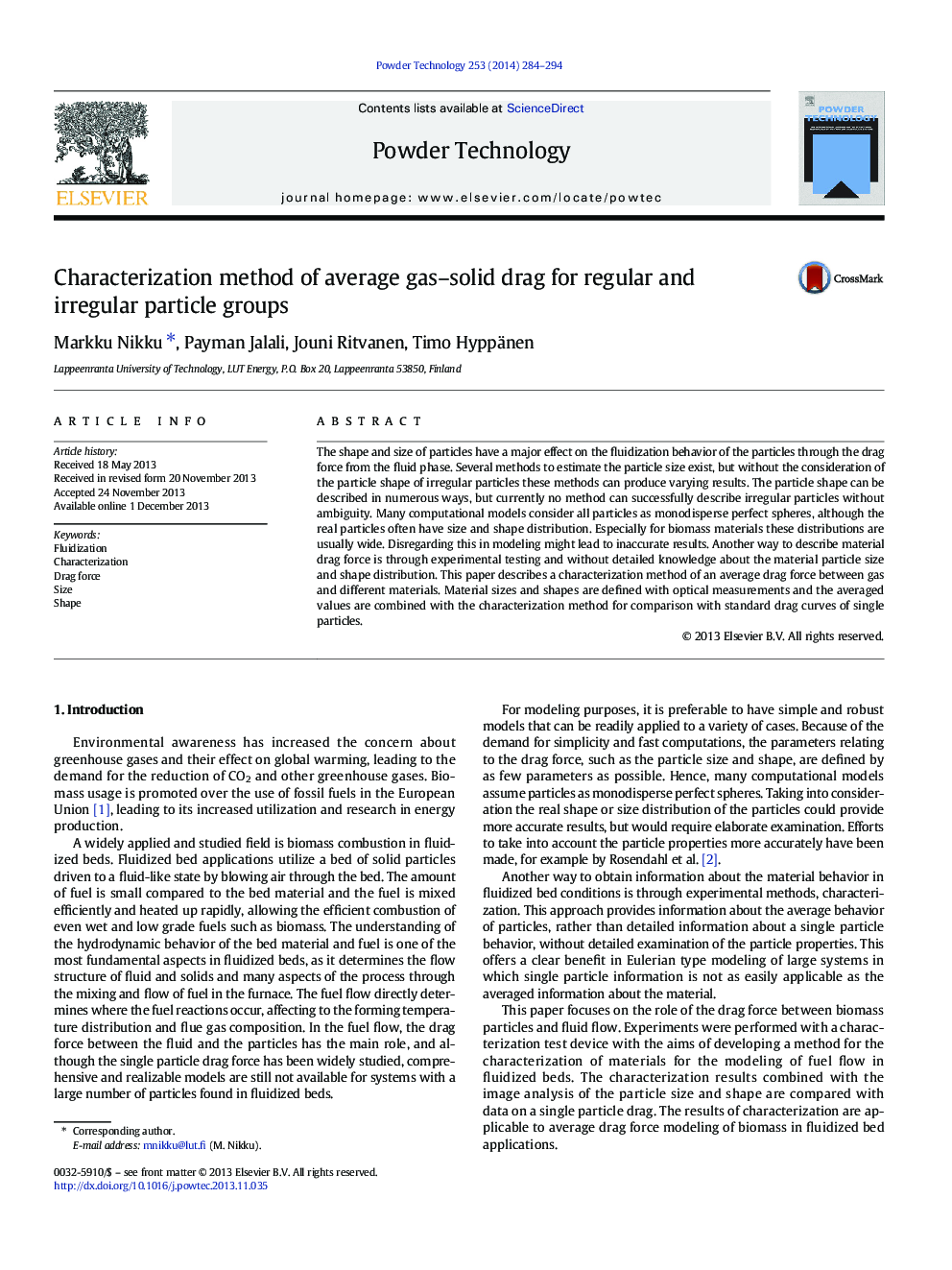| Article ID | Journal | Published Year | Pages | File Type |
|---|---|---|---|---|
| 236463 | Powder Technology | 2014 | 11 Pages |
•Shape and size distribution of biomass particles was found to be wide.•2D image analysis does not accurately describe shape of irregular particles.•A new method to characterize gas–solid drag of materials is presented.•Presented method does not require information about the material properties.•Results of characterization are comparable to calculated drag coefficients.
The shape and size of particles have a major effect on the fluidization behavior of the particles through the drag force from the fluid phase. Several methods to estimate the particle size exist, but without the consideration of the particle shape of irregular particles these methods can produce varying results. The particle shape can be described in numerous ways, but currently no method can successfully describe irregular particles without ambiguity. Many computational models consider all particles as monodisperse perfect spheres, although the real particles often have size and shape distribution. Especially for biomass materials these distributions are usually wide. Disregarding this in modeling might lead to inaccurate results. Another way to describe material drag force is through experimental testing and without detailed knowledge about the material particle size and shape distribution. This paper describes a characterization method of an average drag force between gas and different materials. Material sizes and shapes are defined with optical measurements and the averaged values are combined with the characterization method for comparison with standard drag curves of single particles.
Graphical abstractFigure optionsDownload full-size imageDownload as PowerPoint slide
